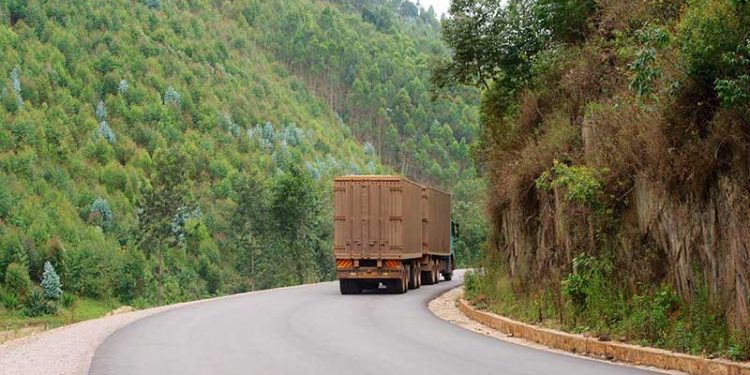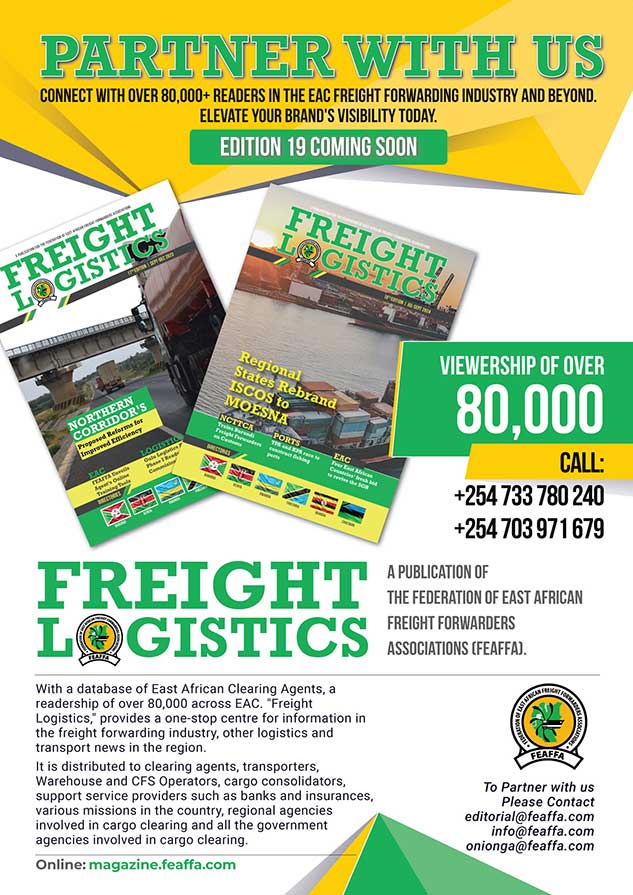A report released recently recommends a raft of measures to reduce Greenhouse Gas emissions along the Central and Northern corridor with the shift to use of railway and water transport mode top on the list.
The Northern Corridor Transit and Transport Coordination Authority (NCTTCA) and Central Corridor Transit Transport Facilitation Agency (CCTTFA) with the support of the TradeMark East Africa (TMEA) commissioned a study dubbed “Greenhouse Gas Inventory for the Northern and Central Corridors”, which aimed to identify total Greenhouse Gas (GHG) emissions along the main corridor routes.
It was aimed at exploring some climate change mitigation projects to be prioritized in an effort to reduce the GHG emissions’ by the transport sector in both corridors.
According to the report, GHG emissions of the Northern Corridor are higher at 1.73 MMtCO₂e (million metric tons of carbon dioxide equivalent) while those of the Central Corridors are at 1.23 MMtCO₂e.
“The study on the GHG offers guidance on how much effort might be required to produce definitive answers for the reduction of GHG emissions. It proposes reduction of GHG emissions intensity by 20% and 15 % by 2030 for the Central and Northern Corridors respectively,” NCTTCA said in a recent statement.
A collaborative endeavour, the report emphasizes, and individual commitments by corridor users will be key to reducing the GHG emissions.
The report rightly notes that the majority of goods in both corridors are transported through roads. Due to high GHG emission intensity of roads in comparison to railways and inland waterways, the report recommends a modal shift to railways and inland waterways for the consideration of the Member States.
GHG emissions of freight corridor are often determined as a function of fuel efficiency, distance travelled, and weight transported; and are affected by the condition of the roads. Poor road condition, the report reveals, impacts on the speed of the vehicle, which increases fuel consumption and ultimately increases GHG emissions.
“The Secretariats for both of the corridors are advocating for rehabilitation of major highways to ensure road quality in accordance to the International Roughness Index (IRI),” NCTTCA statement read in part.
It list a number of routes for improvement along the Northern Corridor as Mombasa-Nairobi, Nairobi-Malaba, Nairobi-Busia, Busitema-Kampala, Luwero-Elegu, Luwero-Goli, Mbale-Goli, Mubende- Kasindi, and Mbale- Elegu. Along the Central Corridor, the report recommends Morogoro – Isaka, Dar es Salaam – Morogoro, Isaka – Rusumo, Isaka – Mwanza and Isaka – Kabanga for improvement.
There is also a need to reduce empty return trips in both corridors, which, according to the report, constituted a significant portion of the estimated total GHG emissions of the return journeys.
The report noted that, in empty trips as well as in the loaded trips, GHG is emitted. However, in the empty trips, fuel is consumed, and GHG emitted without carrying out any useful work.
In both corridors, the report shows that exports make only 14% of the total trade resulting to a higher proportion of empty return trips, with nearly 30% of trucks loaded and 70% returning empty.
In realising this, the report recommends initiatives like route optimisation, reverse logistics for efficiency and cost-effectiveness, and truck aggregator model for both the two corridors and truck operators.
Through the development of a green leadership programme for truck operators and fleet owners, the report suggests voluntary climate targets of improvement in fuel efficiency and reduction in pollutants.
The targets, the report proposes, will be defined for different types of trucks, truck ages, and depending on other truck characteristics as may be identified.
“Those that will achieve the set climate targets can be incentivised by providing concessional toll rates, reduction in road tax, and priority clearance in port or customs area among others to encourage regular vehicle maintenance and periodic pollution control tests” proposes the report.
The report, in addition has recommended capacity building for truck drivers on eco-driving practices like gentle acceleration, maintaining a steady speed, anticipating traffic, avoiding high-speed driving, and coasting to reduce fuel consumption and significantly reduce vehicle emissions.
Apart from infrastructure improvement and capacity building aimed at reducing GHG emissions, the report also proposes vehicle efficiency improvement projects.
Engine losses and aerodynamic drag, the report says, create a drain on the fuel efficiency of the trucks. The report proposes that the two corridors should collaborate with national automobile research institutes in different partner States and truck manufacturers to standardise aerodynamic features of the trucks. The aerodynamic additions to the trucks, in totality, reduce the strain on fuel efficiency and consequently the GHG emissions.
The report concluded that the adoption of the proposals and guidance from the corridors can significantly help the countries achieve GHG emission reduction targets for the transport sector in the region.





